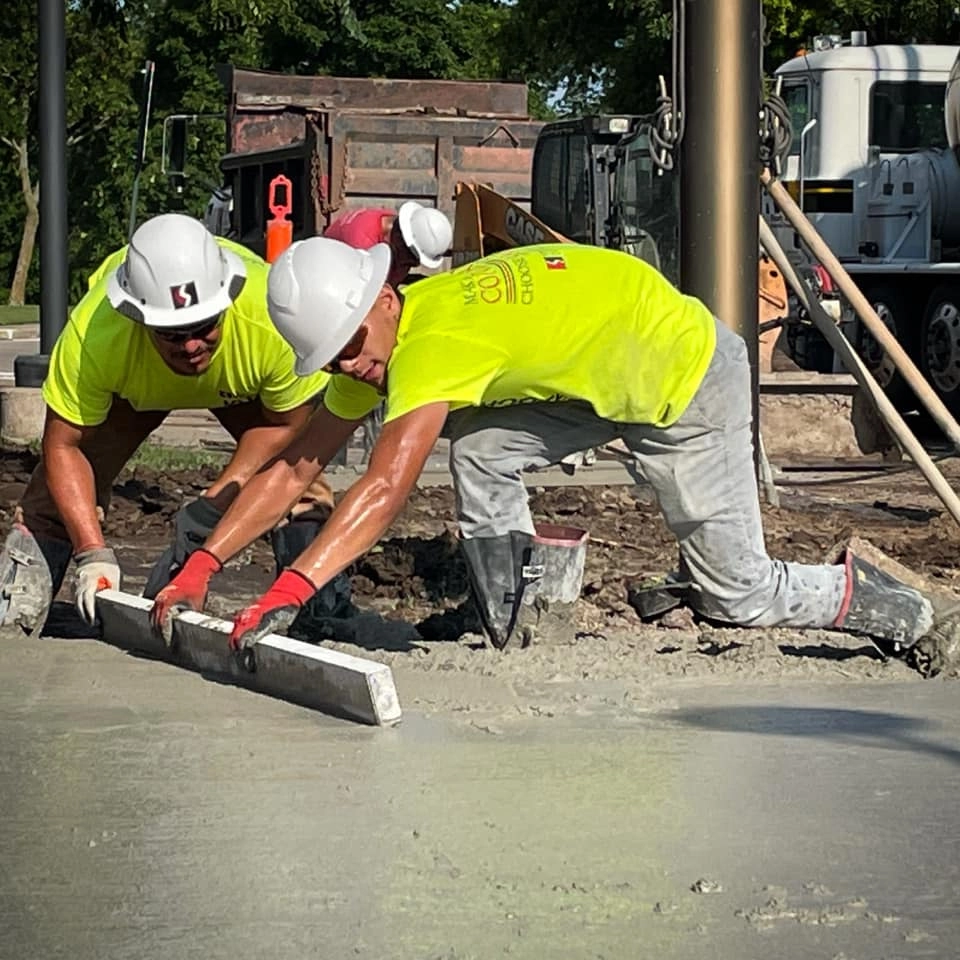Concrete Crew Decatur TX Proper preparation helps create a stable foundation, ensures proper drainage, and minimizes potential issues that could arise during or after construction.

Here’s a comprehensive guide on how to prepare your property for a concrete patio installation:
1. Design and Planning:
Before starting any physical preparation, take the time to plan and design your concrete patio. Consider factors such as the size, shape, location, and layout of the patio, as well as any additional features or amenities you want to include. Measure the area where the patio will be installed and sketch out a rough layout to guide the construction process.
2. Obtain Necessary Permits:
Check with your local building department to determine if permits are required for constructing a concrete patio on your property. Permit requirements may vary depending on your location and the size of the patio. If permits are needed, submit the necessary paperwork and pay any associated fees before proceeding with the project.
3. Choose the Right Location:
Select a suitable location for your concrete patio based on factors such as sunlight exposure, privacy, accessibility, and proximity to your home. Ensure that the chosen location allows for proper drainage away from the house and other structures to prevent water damage.
4. Clear the Area:
Before construction can begin, clear the designated area of any existing vegetation, debris, or obstacles. This may involve:
- Removing grass, weeds, shrubs, or trees from the site using a shovel, rake, or sod cutter.
- Clearing away rocks, stones, branches, and other debris that could interfere with the construction process.
- Verifying that underground utility lines, pipes, and cables are located and marked to avoid accidental damage during excavation.
5. Excavation and Grading:
Once the area is clear, excavation and grading are necessary to prepare the ground for the concrete patio. This involves:
- Excavating the soil to the desired depth, typically around 4 to 6 inches below the finished grade of the patio. Use a shovel, backhoe, or excavator to remove the soil evenly across the entire area.
- Sloping the excavated area away from the house or other structures to ensure proper drainage. Aim for a minimum slope of 1/4 inch per foot to prevent water from pooling on the patio surface.
- Compact the soil base thoroughly using a plate compactor or hand tamper to create a stable foundation for the concrete.
6. Install Sub-base Material:
After excavation and grading, install a sub-base material to provide additional support and stability for the concrete patio. This may include:
- Adding a layer of crushed stone or gravel to the excavated area and compacting it to create a solid base. The thickness of the sub-base layer will depend on the soil conditions and the intended use of the patio.
- Leveling the sub-base material to ensure a uniform surface across the entire area. Use a rake or screed board to spread the material evenly and remove any high or low spots.
7. Install Forms and Reinforcement (if needed):
Once the sub-base is in place, install forms along the edges of the patio to contain the concrete and define its shape. This may involve:
- Using wooden or metal forms secured with stakes or nails to create a perimeter around the patio area. Ensure that the forms are set at the correct height and slope for proper drainage.
- Installing reinforcement, such as wire mesh or rebar, within the concrete to help distribute loads and minimize cracking. Position the reinforcement material in the middle of the concrete slab, ensuring it is adequately supported and does not protrude above the surface.
8. Plan for Drainage:
Proper drainage is essential for preventing water from pooling on the patio surface and causing damage over time. Ensure that the patio slopes away from the house and other structures, directing water towards a designated drainage point. Consider installing a drainage system, such as French drains or gutter downspouts, to further manage water runoff.
9. Address Additional Features and Utilities:
If your concrete patio will include additional features or amenities, such as outdoor kitchens, fire pits, or electrical outlets, plan for their installation during the preparation phase. Ensure that utilities, such as water and electricity, are properly routed and installed before pouring the concrete.
10. Final Inspection and Approval:
Before proceeding with the concrete patio installation, conduct a final inspection of the site to ensure that all preparations have been completed according to plan. Double-check the layout, grading, drainage, and any additional features to ensure they meet your specifications and local building codes.
Concrete Crew Decatur TX By following these steps and properly preparing your property for a concrete patio installation, you can ensure a smooth and successful construction process and enjoy a durable and functional outdoor living space for years to come.
Wise County Concrete Crew
103 US-287, Decatur, TX 76234, United States
1-940-461-7137
